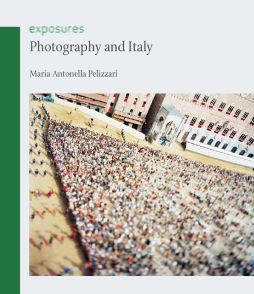
Additional Information
Book Details
Abstract
In this beautifully illustrated book Maria Antonella Pelizzari traces the history of photography in Italy from its beginnings to the present as she guides us through the history of Italy and its ancient sites and Renaissance landmarks.
Pelizzari specifically considers the role of photography in the formation of Italian national identity during times of political struggle, such as the lead up to Unification in 1860, and later in the nationalist wars of Mussolini’s regime. While many Italians and foreigners— such as Fratelli Alinari or Carlo Ponti, John Ruskin or Kit Talbot—focused their lenses on architectural masterpieces, others documented the changing times and political heroes, creating icons of figures such as Garibaldi and the brigands. Pelizzari’s exploration of Italian visual traditions also includes the photographic collages of Bruno Munari, the neorealist work of photographers such as Franco Pinna, the bold stylized compositions of Mario Giacomelli, and the controversial images created by Oliviero Toscani for Benetton advertising in the 1980s.
Featuring unpublished works and a rare selection of over one hundred images, this book will appeal to art collectors and students of art history and Italian culture.
“Photography and Italy nicely captures the potential of these books in which the ‘and’ poses the question of whether photography comes out of, reflects on or exceeds its historical and cultural contexts.”—Source — Source
“[The author] takes you from the earliest days of photography in Italy up to the present time, highlighting how it has impacted on Italian culture and even played a part in the formation of the nation's identity. Beautiful photography illustrates throughout, with some rare and previously unpublished shots included.” — Italia!
“The title of this valuable book is telling; its subject matter is not Italian photography, but photography and Italy. Its early chapters detail how non-Italians made photographic use of Italy as a form of the exotic, antique, and primitive—yielding, over the course of decades, to a native photographic infrastructure, a communications industry, and a fully self-conscious Italian nationalist agenda during the key modernist decades of the early and mid-twentieth century. This complex and intriguing story has never before need told for an English-speaking audience.” — Afterimage
Maria Antonella Pelizzari is associate professor in the Department of Art at Hunter College in New York. She is also the editor of Traces of India: Photography, Architecture and the Politics of Representation.
